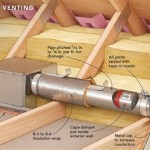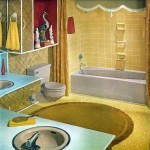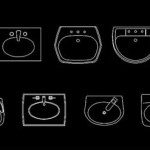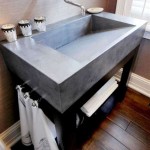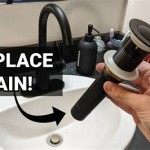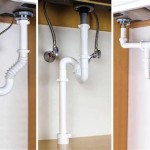Replacing Bathroom Floor Rotted In Kitchen Cabinets: How To Remove
Discovering rot in kitchen cabinets often signals a more extensive water damage issue. If the damage extends to the bathroom floor directly below, a comprehensive repair is necessary. This involves removing the affected kitchen cabinets, addressing the damaged subfloor and joists, repairing the bathroom floor, and finally reinstalling the cabinets or new ones. This article provides a step-by-step guide to this complex process.
1. Assessing the Damage and Preparing the Work Area
Before beginning any demolition, thoroughly assess the extent of the damage. This includes identifying the affected cabinets, inspecting the subfloor and joists from below (if accessible), and determining the area of the bathroom floor requiring repair. Documenting the damage with photographs is highly recommended for insurance purposes. Clear the area of any items stored in the cabinets and disconnect all plumbing and electrical connections to the affected area. Turn off the water supply to the bathroom above the damaged area. Protect adjacent surfaces with drop cloths and cover vents to prevent dust from spreading throughout the house.
Safety is paramount. Wear appropriate safety gear, including safety glasses, dust masks, gloves, and closed-toe shoes. If asbestos is suspected in older materials (common in homes built before the 1980s), consult a professional asbestos abatement company before proceeding.
2. Removing the Affected Kitchen Cabinets
Begin by removing the cabinet doors and drawers. Label them carefully to facilitate reinstallation if they are not being replaced. Next, detach the cabinets from the wall. Typically, cabinets are secured with screws through the back into the wall studs. Locate these screws and carefully remove them. If the cabinets are glued or caulked to the wall, use a utility knife to score the sealant before attempting to remove them. Carefully remove the cabinets, taking care not to damage surrounding walls or undamaged cabinetry.
Once the cabinets are removed, the extent of the subfloor damage will be fully visible. Inspect the joists supporting the subfloor for rot or water damage. Any damaged or weakened joists will need to be replaced or reinforced.
3. Repairing the Subfloor and Joists
Remove the damaged section of the subfloor using a reciprocating saw or circular saw. Cut along the joists to create a clean, manageable opening. If the joists are affected, they will need to be repaired or replaced. Replacement involves cutting out the damaged section and installing a new piece of lumber, ensuring it is securely fastened to the existing joists with appropriate hangers and nails. Reinforcement may be an option for slightly damaged joists, using sister joists alongside the existing ones. Consult a structural engineer to determine the best approach based on the specific damage.
Once the joists are addressed, replace the removed section of subfloor with new plywood of the same thickness. Ensure it is securely fastened to the joists with screws spaced appropriately. Use a level to ensure the new subfloor is flush with the existing subfloor.
4. Repairing the Bathroom Floor
From the bathroom above, locate the area corresponding to the subfloor repair. The extent of the bathroom floor damage will dictate the repair method. If the damage is localized, it might be sufficient to replace a single tile or a small section of flooring. More extensive damage may require replacing a larger area of flooring. Follow the manufacturer's instructions for removing and replacing the specific type of bathroom flooring.
Ensure the subfloor below is completely dry before installing new flooring. This can be expedited with fans and dehumidifiers. Once the new flooring is installed, apply sealant around the edges to prevent future water infiltration.
5. Reinstalling or Replacing Kitchen Cabinets
Once the subfloor and bathroom floor repairs are complete and thoroughly dry, the kitchen cabinets can be reinstalled or replaced. If reinstalling the original cabinets, ensure they are dry and free of any mold or mildew. If replacing the cabinets, follow the manufacturer's instructions for installation. Secure the cabinets to the wall studs with screws and apply caulk or sealant around the edges to create a watertight seal.
Finally, reinstall the cabinet doors and drawers. Check that all doors and drawers operate smoothly and that the cabinets are level and securely fastened.
6. Preventing Future Water Damage
Preventing future water damage is crucial. Identify and address the source of the original leak. This might involve repairing leaky plumbing fixtures, improving bathroom ventilation, or installing a waterproof membrane under the bathroom flooring. Regularly inspect plumbing fixtures and appliances for leaks and address any issues promptly. Ensure adequate ventilation in the bathroom to reduce moisture buildup. These preventative measures will protect your kitchen and bathroom from future water damage and costly repairs.

How To Repair Your Water Damaged Floor Cabana State Of Mind

How To Replace Rotted Wood Under A Kitchen Sink Diy Guide Dengarden

How To Replace A Rotten Kitchen Cabinet Floor 8 Simple Steps

How To Fix Rotted Cabinet Bottom Floor Much Sink Install House Remodeling Decorating Construction Energy Use Kitchen Bathroom Bedroom Building Rooms City Data Forum

Replace Sink Cabinet Floor

How Do I Repair My Water Damaged Sink Cabinet Hometalk

Repairing A Water Damaged Sink Base Cabinet Floor

Fixing A Water Damaged Cabinet Base Underneath Kitchen Sink

Rotted Sink Cabinet Floor How To Fix

How To Replace Rotted Wood Under A Kitchen Sink Diy Guide Dengarden
